Blackberries: A Sweet and Healthy ‘Super Food’
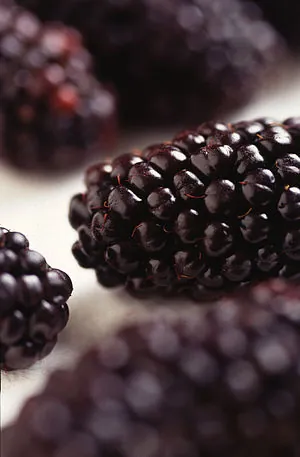
This article originally appeared in the January/February 2013 issue of Foodie News, brought to you by the Public Relations Department of the American Farm Bureau Federation.
South Barlow Berries, a family-owned farm in beautiful Canby, Oregon, offers a variety of berries including blackberries, strawberries, blueberries and raspberries.
Zina Martishev, owner of South Barlow Berries, says the usual order of berry ripening is strawberries, then blueberries and raspberries, followed by blackberries. The farm is introducing an earlier ripening version called Obsidian this year, which is expected to boost berry sales.
The earlier berries are available for harvest, the better, Martishev explained.
“We have a lot of u-pick fields and we also have a little bit that we take to the processing plants, but most of our berries are for u-pickers,” she said.
Blackberries make a low-calorie treat, with just 62 calories in a 1-cup serving. Blackberries are also high in fiber. A 1-cup serving contains 7.6 grams of fiber, more than most fruits.
Martishev says blackberries are being touted as having as much or possibly more antioxidants than blueberries. “It’s just that the promotion is not there yet as it is for blueberries and raspberries,” she said.
According to the American Heart Association, the antioxidants in blackberries can protect eyesight, decrease inflammation, prevent premature mental aging, strengthen the blood vessels, protect the cardiovascular system and decrease risks of developing a variety of chronic illnesses, including forms of cancer, diabetes, hypertension and heart disease.
Available in August, Triple Crown is another blackberry variety. It is three times the size of a regular blackberry, big, black, glossy, sweet and juicy and not as seedy as most blackberries. Triple Crown is great in pies, jam, smoothies, ice cream and for freezing.
South Barlow Berries also supplies some of Oregon’s premier farmers’ markets with farm-fresh berries.
“There is nothing that compares to berries straight from the vine,” said Martishev. “The young children enjoy the blackberries the most at our farm stand, they seem to always want to touch and taste the blackberries more than any other berry.”
Oregon is the top state for blackberry production. For more information about blackberries or South Barlow Berries visit www.southbarlowberries.com and www.pickyourown.org.
Are Sweet Cherries the New Super Fruit?
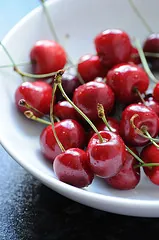
Are you having trouble getting in the recommended number of fruits and vegetables each day? Do you need a little incentive to get you to choose fruit over candy to appease your sweet tooth? If so, you may be as interested as we were in some recent findings from a United States Department of Agriculture (USDA) study on the health benefits of sweet cherries.
The term “superfruit” has become increasingly popular in the last few years and in many cases, it is nothing more than a marketing ploy. It’s not that fruit isn’t good for you; it is absolutely a key component to a healthy diet. With all the hype about “superfruit this” and “superfruit that,” many consumers, like you, struggle to understand what makes one fruit super and another simply good. Luckily, research teams like the one involved in this study are trying to answer that question, and definitively determine which fruits have seemingly super powers and why.
Are Sweet Cherries Super?
In the case of sweet cherries, the research team wanted to understand if consuming these delicious fruits offered any benefits beyond checking off one of your recommended daily servings. In 2006, the team conducted the initial study which showed that when people ate sweet cherries, they experienced a marked decrease in the number of inflammatory biomarkers found in their blood. If you know anything about chronic disease, you already know why this decrease matters. For everyone else, here is a quick look at why lowering the number of inflammatory biomarkers is a big deal.
Dr Kent Erickson from UC Davis Medical School in California, who was on the research team, explained that other research has shown the link between certain inflammation biomarkers and an increased risk of developing some devastating chronic diseases. People who elevated levels of biomarkers may be more likely to be diagnosed with cardiovascular disease, diabetes, and even cancer. With this understanding, the team sought to determine if eating sweet cherries had a demonstrable effect on the number of these specific biomarkers related to inflammation. The idea being, that if you can decrease the number of biomarkers in the blood, you may be on your way to preventing the condition all together.
In the original 2006 study, there were 18 participants between the ages of 45 and 61 who had an increased level of C-reactive proteins, the inflammation biomarkers being studied. The initial 2006 results showed that consuming sweet cherries lead to a reduction of 3 inflammation biomarkers. Then, in 2010, the team went back and performed a more comprehensive and sophisticated analysis of the original data and conducted more testing on frozen samples that remained from the 2006 study. This additional analysis enabled them to look at a larger range of biomarkers than was possible in the original study. The new analysis revealed that consuming cherries actually impacts the levels of 9 inflammatory biomarkers in the blood instead of only the 3 originally identified.
This is great news for those with inflammatory conditions like arthritis as including sweet cherries in their diet may help their symptoms in addition to helping lower the risk of developing other chronic diseases.
What Is Super About Sweet Cherries?
With the new research in hand, we wanted to see what other benefits eating sweet cherries can offer our bodies. We turned to the National Cherry Growers and Industry Foundation to learn more. In addition to helping lower the number of inflammatory biomarkers in our blood, sweet cherries also offer some fabulous health benefits including:
- Cancer Fighter – Sweet cherries are packed with a bunch of cancer-fighting compounds including carotenoids and anthrocyanins. These antioxidants may help round up and neutralize the free radicals that can turn into cancer.
- Cardiovascular Health – Red wine, which contains similar anthrocyanins, has been shown to reduce the risk of developing cardiovascular disease by preventing cell damage and inhibiting inflammation. There is reason to believe, based on available research, that sweet cherries offer the same health benefits.
- Diabetes Prevention – Although the research on this topic is not resounding, some findings indicate that there may also be a link between consuming the anthrocyanins contained in sweet cherries and a reduced risk of insulin resistance and intolerance to glucose. By helping the body produce insulin, sweet cherries may help prevent this disease.
- Packed with Potassium – In addition to providing a solid serving of dietary fiber, sweet cherries are also a great source of potassium which is crucial in maintaining a healthy blood pressure and preventing things like strokes.
Related articles
- What’s in Season in July? (fillyourplate.org)
- Perfect Food for Poolside Parties (fillyourplate.org)
- Spring For Salad! (fillyourplate.org)
Top 10 Foods to Alleviate Stress

When we talk about stress and food in the same sentence, it usually refers to how many of us eat all the wrong things when we are feeling stressed out. That assumption makes sense because stress eating is a big problem for so many people. Unfortunately, for those of us who turn to food to manage stress, research conducted by the Center for Disease Control (CDC) indicates that the food we choose when we stress-eat is high in calories, fat, and sugar. This is bad news if you are already overweight or working hard to maintain a healthy weight. In order to put a more positive spin on the relationship between stress and food as we move through Stress Awareness Month, we thought it would be helpful to talk about what foods we should eat when we are stressed. These foods may not be the first thing we crave as our stress level rises, but if we can choose these foods instead of foods that are full of calories, fat, and sugar, we can decrease our stress without increasing our waistline.
Here are 10 of the best stress busting foods you can use to stress eat your way to better health.
1. Asparagus
Asparagus is a great stress food because it provides the same kind of crunch as chips without all the calories and fat. It is also full of folic acid which can act as a mood stabilizer by promoting the production of neurotransmitters like dopamine and serotonin.
2. Beef
You may not think of beef as a “healthier option” but when it comes to stress eating, it can hit the spot. Because beef has high levels of B vitamins and zinc it also helps to keep you off the stress-induced mood rollercoaster. Choosing lean beef can provides a punch of protein which gives you a sustained source of energy rather than a sugar induced spike.
3. Avocados
Avocados are also high in stress-relieving, mood stabilizing folate as well as several anti-oxidants and B vitamins, including B6. This is an important B vitamin that can rapidly be depleted when you are under stress.
4. Milk (Skim or 1%)
Dairy products that are low in fat, like milk, are natural stress busters. Filled with B vitamins, calcium, and protein, milk can help keep stress-related cravings at bay by making you feel satiated for longer. The B vitamins also help create calming neurotransmitters.
5. Nuts
Nuts can be a great stress-eating snack because many varieties offer the salty taste and crunchy texture we are craving when we reach for chips. But unlike chips, nuts also provide vitamins and healthy fats. You still need to watch your serving size because too much of a good thing can still be bad for you.
6. Berries
Berries, especially blueberries, are filled with antioxidants, Vitamin C, and fiber. Vitamin C is a powerful stress buster and may even help reduce the amount of stress hormones coursing through your body.
7. Tuna
Another food high in B6 and B12, tuna is also packed with protein like lean beef. This means that it helps alleviate stress while also making you feel full longer which can cut down on snacking between planned meals.
8. Garlic
In addition to raising our blood pressure and making us moody, stress also weakens our immune system making us more susceptible to getting sick. Garlic helps combat this side-effect of stress by boosting your immune system and providing a good dose of antioxidants.
9. Oatmeal
Oatmeal is full of fiber which makes you feel full longer and can help you cut down on sugary or salty snacks. It also helps with the production of those all important neurotransmitters that improve mood and cognition.
10. Oranges
Everyone knows that oranges are a great source of Vitamin C and when it comes to chronic stress, Vitamin C can be a savior. Vitamin C is a great immune system booster but also helps repair damage that cortisol, the stress hormone, can cause in the brain.
To find recipes that will fill your plate with these healthy, stress-reducing foods, check out our recipe page on Fill Your Plate.
Related articles
- How Not to Eat When Something’s Eating You (fillyourplate.org)
- Celebrate Heart Health this February (fillyourplate.org)
- When it Comes to Yogurt, It’s All Greek to Me (fillyourplate.org)
Why Popcorn is Popping Up in All the Best Places

There is no question that Americans love popcorn. On average, we each consume more than 65 quarts of it each year in movie theaters, at country fairs, and in our own living rooms. We make it in specially made air poppers, in the microwave or the old fashioned way on the stove. We buy it already popped, candied, and in a variety of unusual flavors and we even use it to make garland to hang up during the holidays. There is no question that popcorn has a place in our culture’s snack food hall of fame but this year, it is popping up in some unusual and even unfamiliar places.
Across the food industry, popcorn is being touted as the hottest snack of the year. In a recent foodiecast from the American Farm Bureau, Zack Honeycut, popcorn farmer and the AFB’s Young Farmer and Rancher Chairman explained why these common kernels are popping up in new ways on store shelves and on the menus of upscale restaurants. He attributes some of the trend to our desire for healthier eating habits. Popcorn is a whole grain that is high in fiber and low in calories. In fact, you can eat three cups of air popped popcorn and get an entire serving of whole grains for less than 100 calories. When compared to other snack foods, popcorn, in its plain, unflavored, unsalted, unbuttered form, stands out as a healthier option.
This is one reason that popcorn is showing up in new places. Honeycut notes that popcorn bars are replacing candy and cupcake bars as the first choice for wedding receptions and popcorn chips are finding their place next to the potato chips and corn chips on supermarket shelves. Manufacturers are also featuring new flavors, moving beyond the different varieties of butter-flavoring that have been our popcorn staple for almost a generation.
Popcorn’s hot trend status doesn’t stop at the grocery store door. Chefs at restaurants across the country are populating their menus with unusually flavored popcorns like black truffle and wasabi. Chefs are also using the healthy snack to add a lower calorie crunch to their signature soups and salads.
Popcorn has long held one of the lower spots on the snack food hierarchy. It wasn’t as cool as other snacks like potato chips in a can or corn chips that taste like cheese. It didn’t have the sweetness of candy or the creaminess of chocolate to make it a sought after treat. It was never rare or expensive enough to lift it up from its humble beginnings.
But as our society changes so do the things we value and when it comes to popcorn, it is easy to understand why it is now popcorn’s turn to shine. As families tighten their belts and seek to shrink their waistlines, the low cost that made popcorn a favorite during the last financial crisis paired with its nutritional value and low calorie count make it the perfect snack for 2013.
Related articles
- 3 Tips to Help Start Your Day the Healthy Way (fillyourplate.org)
- National Popcorn Day Pops on the Calendar (fillyourplate.org)
- 8 Great Ways to Celebrate National Tortilla Chip Day (fillyourplate.org)
7 Tips for Eating Your Way to More Energy
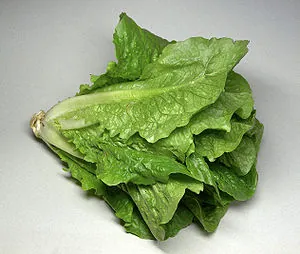
In today’s fast paced world, everyone is looking for more energy to help them get through the day. Before you pour another cup of coffee or gulp down an energy drink, stop and take a good long look at your lunch. The key to getting the boost you need to be your best can be found by making some changes to what you are using to fill your plate.
Try these 7 great locally grown energy boosting options.
1. Lean Meat
Everyone knows that energy comes from protein and if you are looking for a way to keep your energy up all day, swapping out your morning bagel or lunchtime burger for a lean cut of locally raised pork or beef may be just what you need. These meats are good sources of both protein and iron which give you a boost that lasts much longer than caffeine or sugar. Try Zesty Papa Protein Scramble for breakfast or Asian Lettuce Wraps for lunch.
2. Spinach
There is a reason that Popeye was strong to the finish! Spinach provides several energy boosting nutrients like folate, calcium and vitamins A, C, E, and K. For an energy packed lunch, try Lemon Spinach and a grilled chicken breast.
3. Dairy
Dotting your day with dairy products like cheese, yogurt and milk helps maintain your energy level over the course of the day. If you aren’t riding the energy rollercoaster, it is easier to avoid high sugar, high fat quick fixes. Try a slice of Arizona Quiche for breakfast or a bowl of Comforting Corn Chowder for lunch.
4. Broccoli
One of the best things about broccoli is that it helps our bodies turn food into energy. Packed with vitamins A, B and C, broccoli is great raw, steamed, or as part of a salad filled with dark leafy greens and other energy boosting produce.
5. Pecans
Pecans, like other nuts, are jam-packed with 19 essential vitamins and minerals like vitamins A and E, calcium, magnesium, phosphorus, potassium, and zinc. Nuts are also a good source of healthy fats. When you feel yourself starting to settle into the 3PM slump, grab a handful of pecans rather than a candy bar full of empty calories to give you the energy you need to finish out your day.
6. Lettuce
Green leafy lettuces like leaf lettuce and romaine lettuce give your body a good dose of vitamin C, beta-carotene, chromium, folic acid and dietary fiber. For the best energy boost, fill up your plate with salads like the Green Salad and Join the Party Salad made with raw lettuce.
7. Cantaloupe
Whether you are looking for a sweet treat at breakfast or a refreshing afternoon snack, cantaloupe is the answer. This juicy melon is filled with beta-carotene, vitamin C, folate, and potassium and goes great at any meal and even as a healthy, energy boosting snack. Eat it all by itself or with other fabulous Arizona fruit in Melon Cucumber Salad.
Related articles
- What’s in Season in March? (fillyourplate.org)
- 4 Tips to Help You Eat Right in the New Year (fillyourplate.org)
- 3 Tips to Start Your Day the Healthy Way (fillyourplate.org)
It’s National Ag Day: A Little Thanks Goes a Long Way

On March 19th, we encourage you to celebrate National Ag Day by taking a few minutes out of your day to be thankful for the Arizona farmers and ranchers that provide and protect our local food supply. This day, which falls during National Agriculture Week, was established in 1973 to acknowledge the role agriculture plays in each of our lives. This industry does more than just provide food for us to fill our plates. The agriculture industry provides millions of jobs, produces feed for our animals, fuel for our cars, and fiber to create the clothes on our backs. As you crack an egg at breakfast, slip on a cotton shirt, or sear a steak for dinner, pause, reflect, and recognize the efforts of each individual that works hard to ensure the abundance of America’s agriculture continues to make all those things possible.
Here are 8 reasons to celebrate American agriculture this year:
- The agriculture industry is responsible for 1 out of every 12 American jobs.
- Agriculture ensures access to a safe, reliable, affordable food supply for the U.S. and for much of the world.
- Our farmers and ranchers are the most productive in the world.
- Our agriculture industry makes it possible for us to only spend 6 or 7 cents out of every household dollar on food which is significantly less than most other countries and half as much as countries like Japan and Italy.
- American farmers and ranchers have embraced the need for environmental protection and their efforts have decreased soil erosion by 40% over the past 30 years.
- The agriculture industry also leads the nation in wetland restoration efforts.
- Farmland helps clean our water, clean our air, and creates carbon sinks that can help combat climate change.
- Our farmers and ranchers have embraced alternative energy production and many are providers of alternative energy sources from wind and biofuel.
Here in Arizona, agriculture also plays an important role in economic development, food security, and conservation efforts. Agriculture is a $12.4 billion dollar industry in our state! Arizona agriculture provides 60,000 non-seasonal jobs and is one of the only industries that exports more to other states than it imports. Both of these factors help support and improve the Arizona economy. Throughout the state, farmers and ranchers produce a diverse range of crops and livestock. This diversity paired with our year-round growing season provides a stable, reliable, and accessible food system and helps ensure sustainable long-term food security. From the farmer’s market to the grocery store shelves, Arizona agriculture means access to affordable, locally grown produce, meat, eggs and dairy almost all year round.
Our local farmers and ranchers are committed to making safe, high-quality crop and livestock products available for local consumption and use. You can support their efforts and contribute by buying local products at the farmer’s market and grocery store. When you choose local products, you support the Arizona economy, support the farmers and ranchers, and reduce the environmental impact of every meal you make.
Related articles
- Ask a Farmer: Questions Moms Ask Arizona Farmers & Ranchers (fillyourplate.org)
- A Spark of Optimism for Ag Labor Reform (fillyourplate.org)
- What’s in Season: March (fillyourplate.org)
Getting Creative with Kale!

If you have been to a farmer’s market this month, it’s likely that you have seen bins and baskets full of kale. This dark leafy green is currently in season and packs a powerful nutritional punch. In recent years, kale has gone from relative obscurity to super-star status after being labeled a “superfood.” Many food experts and nutrition scientists discount the superfood movement as more marketing tactic than nutritional designation, but when it comes to kale, the term might be more than hype. With a perfect 1,000, kale is the highest scoring food on the Aggregate Nutrient Density Index (ANDI), a food-rating system that measures nutrients per calorie. To doesn’t get much more super than that!
Although many Americans are unfamiliar with kale, it has been a staple in other areas of the world for centuries. Its rise to prominence couldn’t have come at a better time as more of us are looking for ways to eat better food that is better for us. Kale, which is a form of cabbage, is considered one of the dark leafy greens, even though its leaves can be green or purple. Where collard greens have an earthy flavor and turnip greens tend to be bitter, kale, like spinach, is on the sweeter side. Kale has a crunchier texture than spinach and when baked into chips can provide a healthier alternative to more traditional crunchy snacks.
One of the reasons kale scores so high on the ANDI is its nutritional profile. When boiled without salt or other additions, 3.5 ounces of kale provides the following:
- 28 Calories
- 5.6 g of Sugar
- 2 g of Dietary Fiber
- 1.9 g of Protein
- .4 g of Fat
- 13,621 IU of Vitamin A
- 778% of the RDA for Vitamin K
- 49% of the RDA for Vitamin C
- 20% of the RDA for Manganese
- 11% of the RDA for Vitamin B6
- 7% of the RDA for Calcium
- 7% of the RDA for Iron
- 6% of the RDA for Riboflavin (Vitamin B2)
- 6% of the RDA for Vitamin E
- 5% of the RDA for Thiamine (Vitamin B1)
And that’s just one small serving of this nutrient dense and delicious vegetable!
Here at Fill Your Plate, we are always looking for ways to get more of the fabulously fresh produce grown right here in Arizona into the pantries and onto the plates of local families. This month, kale is in season and we thought it would be helpful to offer up some great ways you can fill your plate with it so we reached out to our Facebook fans and asked them for their favorite things to do with kale.
From Barbara Sellick – Wash & spread the leaves out thin on a baking sheet. Sprinkle with sea salt and bake in a 350 degree convection oven to make crispy kale snacks, like kale chips!
From Linda Gray – Remove the ribs and cut into about 1/2″ pieces. Thoroughly dry the leaves, place on a cookie sheet, toss with about 2T olive oil and some sea salt. Bake at 275 for 20 min. Turn leaves over and bake about another 20 min. These “chips” taste great and are good with any dipping sauce
From Sarah Rose: Add three kale leaves with three carrots and one apple into a juicer! One of my favorite juicing recipes!
From Go Lb Salt: For a real treat, use our chemical-free, gluten-free simple seasonings – Original BBQ and make BBQ kale chips!
From Chris Martin: Fresh lemon juice, touch of water, kale. Cook until wilted. So good.
From Peggy Lee Miller: Strip the veins. Chop. Add slivered almonds toasted in coconut oil, fresh pomegranate seeds, dried cranberries, and toss with lemon/olive oil/agave vinaigrette.
From Mitzi Gomez Hooper: I like to put it in soups. Or sautéed with some curry powder
Related articles
- 4 Tips to Eat Right In The New Year (fillyourplate.org)
- How to Get Your Kids to Eat More Vegetables (fillyourplate.org)
- Where Can I get Farm-Fresh Vegetables Delivered Right to My Door? (fillyourplate.org)
Celebrate Heart Health this February
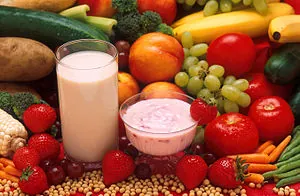
February is traditionally associated with hearts because Valentine’s Day falls right in the middle of the month. But starting February 1st, we all have another reason to be thinking about hearts as this is the start of National Women’s Heart Week. This annual event seeks to increase awareness about the #1 killer of American women, heart disease. There are many things women can do to lower their risk including lifestyle changes like getting more exercise, eating a heart healthy diet, and reducing the stress in their lives. Women also need to know the signs and symptoms of heart problems, especially those that are different from the symptoms experienced by men. Women need to understand the risk factors so that they can make the right choices to safeguard their health. The awareness campaign runs from February 1-7 this year and will focus on prevention, education, intervention, and symptom awareness. For more information on National Women’s Heart Week, visit the Women’s Heart Foundation.
Here at Fill Your Plate, we understand that one of the best ways to protect your heart, no matter which gender you happen to be, is to eat a heart healthy diet. Changing your diet can be one of the hardest lifestyle changes to make, so to help you get a head start on beating your own battle against heart disease, here are some tips for how to eat to support the heath of your heart.
1. Size Matters
Sometimes it isn’t what you are eating, but how much you are eating that matters most. You may eat only the freshest foods and forego anything fatty or fried but even healthy fare isn’t good for your heart if you eat too much of it. Find out what an actual serving size looks like and spend this week measuring out each of your portions. You will be surprised how much more you are actually eating than you think you are eating.
2. Go for the Gold…and Green, and Red, and….
When it comes to getting a gold star for heart healthy eating, you can’t go wrong with vegetables and fruits. Eating a wide range of these foods provides vitamins, minerals, and fiber your body needs to thrive. A diet high is fruit and vegetables also provides some substances that may help prevent cardiovascular disease according to the Mayo Clinic.
3. Focus on Wholeness
This can apply to your mindset and your approach to life, both of which can have a big impact on your stress level, but is also applies to every grain that goes in your mouth. Choosing whole grains like brown rice, flaxseeds, or quinoa gives you more bang for your buck. These foods are a good source of fiber but they also provide other nutrients that can help regulate blood pressure and keep your heart healthy. Simply start swapping in whole grain options in place of the refined and processed grain products you eat today.
4. Skip the Salt
There was a time when salting your food made good sense, unfortunately for most of us, it is no longer that time. Much of the food we eat today has sodium in it which means we are generally exceeding the 2,300 mg per day recommended by the USDA. It may take a little time to convince your taste buds that food tastes good without the extra salt, but the overall impact to your health is worth watching how much sodium you are getting each day.
Following these four tips will get you moving towards a more heart healthy diet. For more information on other changes you can make, check the American Heart Association’s website or follow the dietary guidelines recommended by the USDA.
Related articles
- 4 Tips to Help You Eat Right in the New Year (fillyourplate.org)
- Eat Right and Help Stop Diabetes in its Tracks (fillyourplate.org)
- Healthy Diet Helps Damaged Hearts – WebMD (webmd.com)
4 Tips to Help You Eat Right in the New Year

It’s the time of year when everyone decides to buckle down and get rid of those unwanted pounds. This is why the most common New Year’s Resolution is to lose weight. There is this idea that the New Year brings the potential for a new you, that if you can harness the power of that change, you might be able to use it to support the changes you are looking to make in your life. Unfortunately, that New Year, New You mojo rarely makes it to the end of January and most people who try to lose weight by making a resolution fail.
However, this doesn’t mean now isn’t the right time to try and change how and what you eat. In fact, now is as good a time as any and if the New Year gives you the push that gets to going, you are already harnessing that positive energy and it is already making a difference in your life. The key is to turn all that positive energy into real, lasting changes. This is, of course, the hard part. To help you turn your New Year’s resolution into a lifestyle change, here are some tips that will help you fill your plate with healthy options as you choose a healthy diet.
1. Pick Whole Grains
Whole grains provide a wealth of health benefits and have been shown to lower the risk of certain diseases like diabetes and heart disease. These foods, which include brown rice, whole wheat bread and pasta, and quinoa, are low in fat and packed with nutrition. Whole grains are a good source of good carbs which provide your body with sustainable energy. They are also full of fiber and can help lower cholesterol. The USDA recommends that at last half of your daily intake of grains consists of whole grains.
2. Choose Leafy Greens
Leafy green vegetables like kale, swiss chard, spinach, and broccoli are a welcome addition to any meal. These foods are packed with fiber, vitamins, minerals and can help you feel full without eating as much food. Fill up your plate with these delicious and nutritious veggies and you will make great gains in your battle to change your life.
Right now in Arizona, we’re in the height of our leafy greens farming especially in Yuma, Arizona. So, you’ll most likely purchase your leafy greens at the grocery story from Yuma, the lettuce bowl capitol of the nation during the winter months!
3. Fill the Day with Fruits and Veggies
With a little planning on your part, you can find fun, creative delicious ways to fill your whole day with the goodness of fruits and vegetables. At breakfast, turn fruit and heart healthy yogurt into a smoothie. Stock your fridge with bite size veggies and healthy salad dressing options to swap out for less healthy snacks like chips. Instead of having salad on the side, make salad the main course at dinner and help everyone get a serving or two of veggies. These salads offer great options for filling, healthy meals.
Check out our delicious vegetable recipes on Fill Your Plate, serving up healthy options for cooking in season produce.
4. Eat Breakfast
There is a reason people call this the most important meal of the day. Eating breakfast gets your metabolism going and gives you energy to kick-start your day. Just make sure you are choosing breakfast foods that support your health. Unfortunately, donuts, pastries, and other sweet treats aren’t on that list. Start with a smoothie, a bowl of oatmeal with fruit, or an omelette packed with veggies to get your day off to the right start.
Related articles
- 6 Tips for Starting Your New Year’s Weight Loss Resolution Off Right (fillyourplate.org)
- Eat Right and Help Stop Diabetes in its Tracks (fillyourplate.org)
- Filling Your Plate With Healthy Foods May Actually Save You Money (fillyourplate.org)
7 Savory Ways to Use Sweet Potatoes

Most families only see sweet potatoes show up on their family dinner table a couple times a year- at Thanksgiving and Christmas. We think this is a shame since there are so many delicious ways to use sweet potatoes all year round. The holiday season offers a great opportunity to try out some fantastic and flavorful recipes that highlight the sweet, savory goodness sweet potatoes can bring to any meal. As you plan out your meals for the coming months, consider trying some of our favorite ways to use sweet potatoes. You may find some new family favorites that will enable you to incorporate sweet potatoes into your every day meals even after the holiday season.
1. Sweet Potato Fries
French fries made with sweet potatoes have been showing up on menus and in the frozen food section of the grocery store for the past couple years and can offer a new way to enjoy this family favorite. Sweet potato fries, when baked in the oven, can offer a great alternative to traditional fries. Sweet potatoes are packed with Vitamin A and full of fiber. Since sweet potatoes have a higher sugar content than standard potatoes, fries made with them have a sweetness that can eliminate the need for sugary dipping sauces. Try our recipe for Oven Fried Sweet Potatoes.
2. Sweet Potato Patties
Whether you use them as a side dish or as the main course in a vegetarian meal, patties made with sweet potatoes offer a great way to get this great vegetable onto your table. Whip up a batch of Basil Butter Sweet Potato Patties for lunch of serve them with your choice of meal at your main meal.
3. Holiday Yams
At some point in our lives, most of us have seen a dish made with sweet potato and marshmallows pass us by during Thanksgiving dinner. This year, change up your sweet potato dish and swap gooey marshmallows for heart healthy orange juice. We love this recipe for Orange Coated Yams.
4. Sweet Potatoes, Southern Style
Is this sweet and savory dish dinner or dessert? Baked up almost like a cake and topped with brown sugar, butter, and nuts, you will have a delicious time trying to decide whether our recipe for Southern Sweet Potatoes should be served with everything else or if it is worthy of its own plate.
5. Sweet Potatoes to Start the Day
Most people don’t think of sweet potatoes when they think of breakfast but when with a healthy dose of Vitamin A and a solid serving of fiber, they can help you get a jump on the day. We think this recipe for Sweet Potato & Zucchini Frittata is perfect for brunch during the holiday season and throughout the year.
6. Sweet Potatoes on the Side
Sweet potatoes in a variety of forms also make spectacular side dishes. Just about any meal that could be served with mashed potatoes could also be served with mashed sweet potatoes. You can also sauté them, boil them, fry them, and bake them into succulent and savory side dishes that will complement any meal. Try this recipe for Tessa’s Sweet Potatoes.
7. Southwestern Sweet Potatoes
Sweet potatoes are much sweeter than regular white potatoes but that doesn’t mean they can’t also be spicy. Add a little Arizona flavor to your table with The Angry Hillbilly’s Sweet Potatoes in Adobo Sauce.
Related articles:
- Thanksgiving Recipe Remix: Sweet Potatoes (williams-sonoma.com)
- What Produce Digs Dry Weather? (fillyourplate.org)
- Classing Thanksgiving Dinner Cost Decreases 5% in 2012 (fillyourplate.org)
Eat Right and Help Stop Diabetes in its Tracks
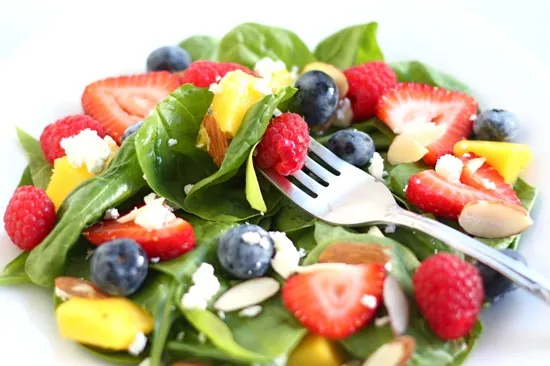
There is no question that one of the greatest health threats of our time is the diabetes epidemic which already impacts 26 million Americans. In addition to those already diagnosed with Type II diabetes, there are another 79 million with pre-diabetes that are also at risk for developing this life-long condition. Considering the current cost of treating those with the condition, which is estimated at about $174 billion, the diabetes epidemic is also a financial crisis for this country. If even a third of those with pre-diabetes become diabetic, it doubles the cost of care. These are the reasons the American Diabetes Association (ADA) works hard every day to stem the rising tide of diagnosis and get the country on a path to a country free of diabetes.
Every November, the ADA expands their every day efforts in order to increase awareness during American Diabetes Month. Held each November, the activities and events held throughout the month help bring people together to raise awareness and work at overcoming this disease. This year, the ADA is sponsoring one awareness effort aimed at helping those without the disease get a glimpse of what it is like to live with it. “A Day in the Life of Diabetes” can be found on the ADA’s Facebook page.
In addition to the other awareness and education activities happening over the course of the month, the ADA wants us all to understand that when it comes to preventing diabetes, there are things we can do. The biggest change many of us can make that has a real and immediate impact on our diabetes risk is to lose weight. Almost two-thirds of adults in this country are overweight or obese which is one of the leading risk factors for developing diabetes that we can control. Additionally, one of the other major diabetes risk factors is not getting enough physical activity, which often goes hand in hand with being overweight.
All this means that the best way to protect your health and lower the likelihood of becoming diabetic during your lifetime is to eat a healthy diet and be physically active. Eating foods that are nutritionally dense but light on calories will help you achieve and maintain a healthy weight and reduce your risk of developing Type II diabetes.
Here are some of the great foods grown right here in Arizona that you can use to create a healthier lifestyle, reduce your weight, and lower your risk for diabetes.
- Beans, which are packed with fiber and protein, provide a great source of nutrition with a low calorie count.
- Dark Green Leafy Vegetables like spinach and kale provide a lot of nutrition but are low enough in calories that you can eat as much as you want.
- Citrus Fruit like lemons and grapefruit provide a good source of fiber, a bunch of vitamin C, and can help soothe a sweet tooth that is longing for some less healthy snacks.
- Sweet Potatoes provide more nutritional value than standard potatoes and can be used to replace them in many dishes and menus.
Related Articles:
- What Can I Eat: Diabetes Superfoods (diabetes.org)
- Study Shows Cheese Lowers Risk of Diabetes (fillyourplate.org)
- Obesity Epidemic: Supermarkets Are Making It Easier to Eat Healthy (fillyourplate.org)
Make a date to enjoy new Yuma festival
Celebrate Medjool dates in historic downtown Nov. 17
 Though you wouldn’t think of the Old West as a place to find a traditional treat of the Middle East, the Yuma area is the world’s largest producer of gourmet Medjool dates – long known as the fruit of kings.
Though you wouldn’t think of the Old West as a place to find a traditional treat of the Middle East, the Yuma area is the world’s largest producer of gourmet Medjool dates – long known as the fruit of kings.
That’s why this town on the banks of the Colorado River is busy making plans for its first-ever Yuma Medjool Date Festival from 8 a.m. to 4 p.m. Nov. 17 in historic downtown.
“It’s going to be a celebration of food, fun, family and all things dates!” said Perlita O. Wicks, coordinator for the City of Yuma Heritage Festivals, which is organizing the new event with Bard Valley Medjool Date Growers. “We’re going to kick off with free date muffins and coffee from 8 to 9:30 a.m., then serve up a whole day of everything you ever wanted to know about dates!”
That includes displays and demonstrations of specialized farm machinery developed specifically for cultivating and harvesting dates and an exhibit of historic pictures, artifacts, equipment and more at the Yuma Art Center, as well as a chance to ask questions of two of the area’s largest growers, Gus Nuñez and Steve Shadle.
But there will also be plenty of chances to sample date delights as well, with cooking demonstrations by local and international chefs – vote for your favorite dish — and a date milkshake contest that’s open to all. And you can leave the guilt at home, because Medjool dates are a “super food” that’s naturally fat free, high in fiber, potassium and anti-oxidents, and low on the glycemic index. Bursting with flavor, chewy Medjools are so richly delicious that many first-time tasters can’t believe they have no added sweetener.
Shaking things up in a whole different way, Zarmineh Moody and the Jawhara Belly Dance Group will provide an exotic flavor to a daylong schedule of music and dance. Vendors will offer festive food, art and collectibles, so this is also the perfect place to pick up a unique holiday gift.
In addition, festival goers can take a free tour of the nation’s most advance date packing facility, operated by Datepac, LLC – but because there are a limited number of tour slots available, you must register in advance at the festival website.
Dates are an important part of Yuma’s number one industry, agriculture – and even Saudi Arabia imports Medjools from our corner of Arizona, recognized by Guinness World Records as the sunniest place on earth. Yuma’s ideal growing conditions mean that local growers don’t need to use pesticides or chemicals to produce a heaping harvest of these tasty treats – up to 10 million pounds a year that’s worth $30 to $35 million to the local economy.
“The date industry in Yuma touches our community in all kinds of ways, from the elegant silhouette the date orchards add to our views, to the inimitable flavor of a date shake,” said Juan Guzman, Datepac marketing manager. “This festival is an opportunity for the whole community to learn more about the wonderful world of Medjool dates and the hard work our growers put into making this natural delight available to all of us – and all of the world.
“We’re excited about giving the whole community an ‘inside look’ at an unheralded side of our local ag industry,” Guzman added. “Come down for a taste of something that’s uniquely Yuman.”
MAKE IT A WEEKEND: The 22nd Annual Colorado River Crossing Balloon Festival takes off Nov. 16-18 from various locations around Yuma. Sponsored by the Caballeros de Yuma, this airy festival draws balloonists from as far away as England and features flights Friday, Saturday and Sunday, and a “glow” Saturday evening.
Info: www.caballeros.org, 928-343-1715.
The Recent Beef? We’re Eating More Ground Beef and Less Steak
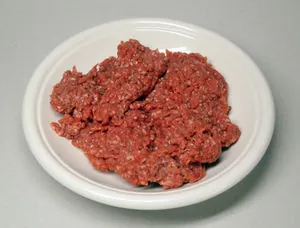
What is your favorite cut of beef? Are you a steak person, or do you prefer ground beef in a dish such as spaghetti or burgers?
According to a recent survey by the Beef Checkoff, we’re eating just as much beef now as we did in 2005, the last time a survey was completed.
Our preferred product? Ground beef. The survey suggests that we often choose ground beef instead of deli-style beef products and steaks.
What other pertinent information can be gleaned from this survey?
Beef Consumption Facts
The Beef Checkoff survey found a number of other interesting facts about our love of beef:
- We’re eating out less than we were in 2005. This is quite possibly a result of economic conditions in many areas.
- More of us are foodies now. 2012 plays host to more cooking shows, new recipe resources, and folks that love to cook.
- Ground beef is being chosen over steak. The preferred mix is 80% lean/20% fat.
- The majority of us (64%) purchase large quantities of beef and freeze much of it for a later date.
- The most preferred method to enjoy beef? The grill. We enjoy a good grilled steak or burger. Also popular were beef with vegetables (such as a fajita preparation) and roasts.
- We like sauces and spices with our beef more than we did in 2005.
- Ethnic foods are becoming more popular, but American/local and Italian food still tops the list.
Beef in Arizona
We’re very fortunate to have a large number of beef producers in AZ. By purchasing from these individuals, we can support AZ ranching while also enjoying our favorite beef products.
Since steak is still a popular summer dish, we asked Kacie Tomerlin of Arizona Legacy Beef for a few beef cooking tips. She said if you do cook a good quality steak “allow it to rest for a few minutes before you put it on the grill. If the steak is too chilled, the muscle fibers are tight. But if you allow the steak to rest for 10 to 15 minutes, or to the touch,” it will be more tender after grilling.
Want a few more steak grilling tips? Be sure to check out Kacie’s recent video on grilling quality steaks.



